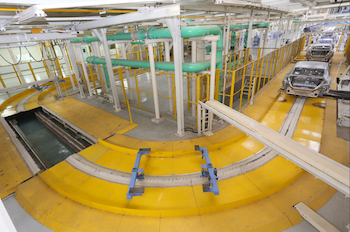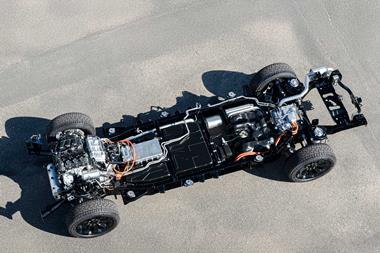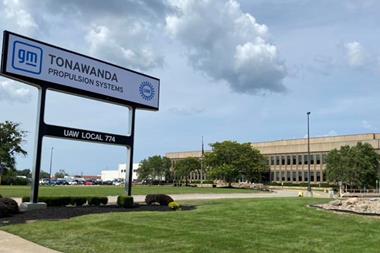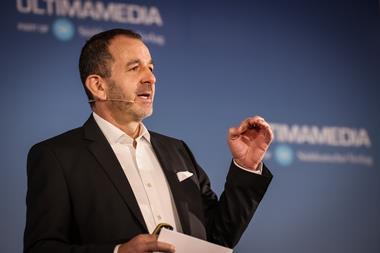AMS takes a look at Honda's innovative ARC production system, recently installed at Prachinburi in Thailand Described by Honda as a unique assembly line that differs from conventional systems by incorporating flowing cell production units into the main line, the newly developed Assembly Revolution Cell (ARC) line became operational at Prachinburi, Thailand, in March last year. On a conventional assembly line, individual production workers (or associates, as Honda prefers to call them) are responsible for a single process, installing parts on vehicle bodies as they move past a fixed workstation on a conveyor. In cell production, each worker takes charge of a range of production processes, installing multiple parts.
Described by Honda as a unique assembly line that differs from conventional systems by incorporating flowing cell production units into the main line, the newly developed Assembly Revolution Cell (ARC) line became operational at Prachinburi, Thailand, in March last year. On a conventional assembly line, individual production workers (or associates, as Honda prefers to call them) are responsible for a single process, installing parts on vehicle bodies as they move past a fixed workstation on a conveyor. In cell production, each worker takes charge of a range of production processes, installing multiple parts.
In Honda’s new production system, four workers get on board an ARC unit – a section of a conveyor that carries one vehicle body and a complete set of parts to be installed. They then assemble the vehicle while moving along the production line together with the vehicle. Honda says this system improves production efficiency by as much as 10%, by reducing the unnecessary movement of personnel, who would normally go to select the correct parts for the specifications of the next unit coming down the line and install them while walking alongside the body. While these are not deemed essential assembly movements, they are viewed as inevitable in conventional production processes.

“With the increased production efficiency of this new factory, we will further strengthen our business operations and enhance the competitiveness of our products and parts made in Thailand”– Gaku Nakanishi, Honda Automobile (Thailand) Co
Honda suggests that using the ARC line production system offers other benefits. For example, the fact that each worker is responsible for multiple production processes helps them to gain wider knowledge and skills, which should have a positive effect on the development of skill levels and, furthermore, the quality of feedback to the development team in future.
Quality maintenance and management support is delivered by the PLUTO system. Each ARC unit is equipped with a tablet device which provides visual and audio instructions, such as the sequence of parts assembly and points for quality management, with the aim being to minimise human errors.
This is backed up by inspection personnel who check each vehicle at the Q-GATE, the quality inspection area which follows the ARC line. This allows them to immediately address any assembly errors. If any are identified, inspection results are fed back to the responsible worker via the PLUTO system, which will display an alert message on the screen when this employee activates the system to work on the next vehicle body.
Giving greater flexibilityAnother advantage of the ARC system is that units can be added or removed, allowing the layout of the production line to be easily adapted, offering the flexibility to meet changes in the model line up or production volume. It also simplifies lineside logistics, since the loop-shape of the conveyor means that the supply of boxes full of parts and the retrieval of empty boxes is done at the same location. As a result, the number of areas where assembly parts are brought to the line is minimised, reducing the workload related to parts handling in the plant by approximately 10%.
However, each ARC unit requires a lot of parts and so Honda has developed its DiSC system. When associates responsible for the parts storage area adjacent to the ARC line prepare assembly parts for upcoming vehicles, lights on shelves illuminate to indicate the location of the required components. This system, which works in conjunction with production planning, ensures the accurate supply of parts for a production line where multiple models are being assembled simultaneously, and is part of an overall quality-control system to reduce errors.
Other efficiency and eco benefitsBeyond the assembly process itself, Honda has undertaken other measures to improve efficiency. In the Prachinburi press shop, process efficiency has been improved by 25% through the implementation of servo control and a high-speed feeder. The servo control ensures precise pressure to produce pressed parts, while the new robot system simplifies the materials handling and feeds parts at a high speed. In addition, lift-assist devices have been installed to optimise the working conditions for personnel.
Another Honda ‘first’ is a conveyor driven by water which has been designed to fully reuse water from welding. Instead of a conventional electrical conveyer, this novel but effective system is used to transport the vehicle bodies and parts on the welding line, contributing to a reduction in energy consumption. Honda adds that the application of compact and lightweight welding jigs has made a significant improvement to the operational efficiency of the weld line.
 A water-driven conveyor moves vehicles through the bodyshop
A water-driven conveyor moves vehicles through the bodyshopAs with the water conveyor, resources are carefully managed and the paintshop at Prachinburi uses water-borne paint to reduce the impact on the environment. It also features a three-coat/two-bake painting system, eliminating a middle coating stage from the conventional four-coat/three-bake process, which reduces the emission of both volatile organic compounds and CO2.
Another energy-saving solution at the plant is a skylight roof with windows that allow daylight to illuminate the plant floor in place of electricity. The need for energy-hungry air conditioning systems has been removed through the use of a roof ventilation system and jet fans.
In conclusion, Prachinburi is clearly an important part of Honda’s strategy for South-East Asia. The factory has adopted the latest production technologies from the Yorii plant, one of the OEM’s most advanced facilities in Japan, and as well as manufacturing the latest Civic model the Thai plant produces plastic parts, engines and engine components. Looking to the future, Honda has suggested that it plans to produce sub-compact and compact models at Prachinburi to further enhance its competitiveness in both domestic and export markets.
At the opening ceremony of the new ARC system, Gaku Nakanishi, president and CEO of Honda Automobile (Thailand) Co, said: “With the increased production efficiency of this new factory, we will further strengthen our business operations and enhance the competitiveness of our products and parts made in Thailand.”







































